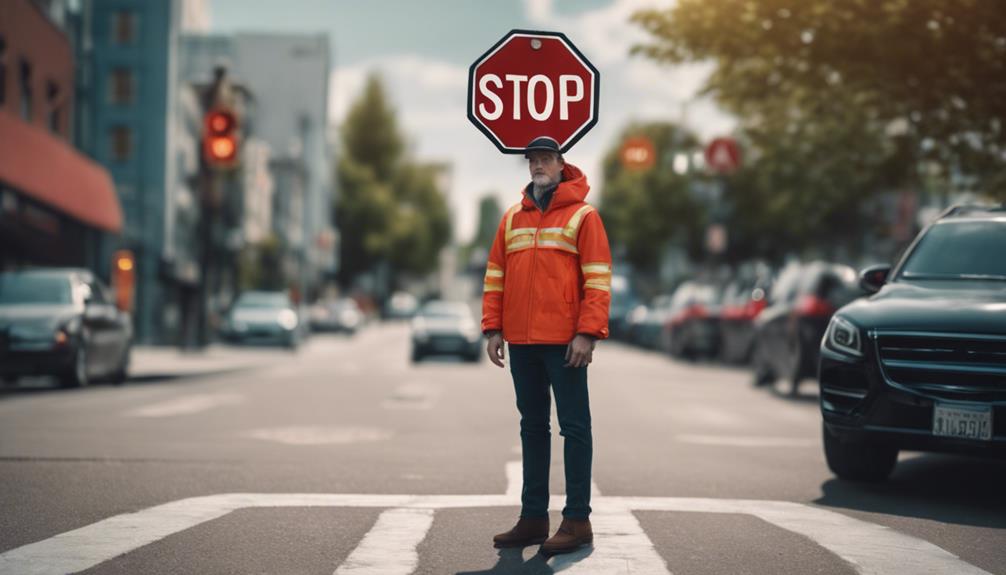Binocular Vision Dysfunction (BVD) messes with how eyes line up, leading to double vision and depth problems. Doctors often miss BVD, but special tests can find it. Symptoms might show as eye pain, balance trouble, and reading tiredness. BVD can spark anxiety due to too much sensory input. It can stem from neurological issues or brain injuries. Treatment includes special lenses, prisms, and vision therapy. Fixing BVD clears up vision and boosts life quality. To truly get BVD, dive into its symptoms, causes, and fixes. Discover helpful tips and secrets for handling this tricky eye problem.
Key Takeaways
- BVD stands for Binocular Vision Dysfunction.
- BVD involves eye alignment issues affecting depth perception.
- Symptoms include eye pain, double vision, and anxiety.
- BVD can lead to sensory overload and reading fatigue.
- Treatment includes specialized lenses, prisms, and vision therapy.
Understanding Binocular Vision Dysfunction
Understanding Binocular Vision Dysfunction reveals the complexities of how our eyes align and perceive the world around us.
When it comes to diagnosing BVD, it's important to seek out an eye doctor who's knowledgeable about this condition. Surprisingly, only 1% of eye doctors routinely check for BVD, leading to its underdiagnosis.
A specialized eye doctor can conduct tests to assess the alignment of your eyes and identify any misalignments that may be causing issues with depth perception and peripheral vision. These misalignments can result in one eye seeing higher or lower than the other, creating unstable vision that requires constant correction.
By consulting an eye doctor who's well-versed in BVD, individuals can receive the proper evaluation and guidance needed to address this condition effectively.
It's essential to advocate for thorough eye exams that include assessments for BVD to ensure early detection and appropriate management.
Common Symptoms of BVD

Common symptoms of Binocular Vision Dysfunction manifest as eye pain, double vision, and balance problems. Individuals experiencing these symptoms may seek evaluation and treatment from eye doctors specializing in vision disorders.
The discomfort caused by BVD can lead to various challenges such as anxiety, dizziness, reading fatigue, poor depth perception, and frequent headaches. Recognizing signs like nausea, bumping into walls, eye squinting, and difficulty concentrating is important in identifying BVD.
It's essential to differentiate BVD symptoms from those of other health conditions to guarantee accurate diagnosis and appropriate management. Additionally, individuals with BVD may also report sensations of eye strain, discomfort in moving vehicles, and anxiety in crowded places, all of which can indicate the presence of this visual dysfunction.
Consulting with knowledgeable eye doctors can help in determining the underlying cause of these symptoms and implementing effective strategies to address Binocular Vision Dysfunction.
The Link Between BVD and Anxiety
The connection between Binocular Vision Dysfunction (BVD) and anxiety becomes evident through the impact of misalignment of the eyes on individuals experiencing this visual condition. People with BVD may find themselves struggling with anxiety symptoms, especially in crowded places where the misalignment can lead to discomfort and difficulty processing visual information.
The sensory overload from visual stimuli due to BVD can contribute notably to feelings of anxiety, making everyday activities challenging. Additionally, the increased light sensitivity experienced by individuals with BVD can further elevate their anxiety levels, creating a cycle of stress and discomfort.
The instability of vision caused by BVD can also trigger fear and unease in various situations, affecting the overall well-being of those with this condition. Addressing BVD through appropriate interventions, such as specialized lenses or vision therapy, can help alleviate the anxiety symptoms associated with visual misalignment, improving the quality of life for individuals experiencing both BVD and anxiety.
Causes of Binocular Vision Dysfunction

The importance of the eyes in individuals with BVD can stem from various causes, including improper eye development and neurological conditions such as concussions or strokes. Traumatic brain injuries play a significant role in the development of BVD, with factors like concussions and strokes being common culprits.
In addition to these traumatic events, neurodevelopmental disorders, neurological diseases, infections, and hormonal changes are also associated with the onset of BVD. Conditions like autism and ADHD can contribute to the development of binocular vision dysfunction, highlighting the complex interplay between neurological conditions and visual function.
The establishment of brain-eye connections after birth is vital in shaping how BVD manifests, underscoring the delicate balance required for proper vision development. Understanding the various causes of BVD is essential in diagnosing and addressing this condition effectively, emphasizing the need for thorough assessments that consider both visual and neurological factors.
Treatment Options for BVD
When it comes to treating BVD, there are various options available to address the condition effectively.
Some individuals may benefit from medication tailored to alleviate specific symptoms of Binocular Vision Dysfunction.
Additionally, surgical procedures can be considered in more severe cases to correct underlying issues causing BVD.
Medication for BVD
In the treatment of BVD, medications are typically not the primary focus and aren't commonly used as a standalone option. When considering medication for BVD, it's important to understand that specialized lenses, prisms, and vision therapy are the mainstays of treatment.
- Specialized Lenses: These lenses can help correct vision issues and provide the necessary support for the eyes.
- Prisms: Glasses with prisms can assist in aligning the eyes properly, aiding in the correction of BVD.
- Vision Therapy: This therapy focuses on retraining eye muscles and enhancing eye coordination, addressing the root causes of BVD.
- Underlying Causes: Identifying and addressing the underlying reasons for misalignment are vital in effectively managing BVD.
Surgical Procedures for BVD
Considering the complexity and risks associated with BVD, surgical procedures are rarely the initial choice for treatment and are typically reserved as a final option after non-invasive methods have been exhausted.
Common surgical options for BVD include eye muscle surgery to correct misalignments and improve binocular vision. However, it's important to highlight that surgery for BVD comes with risks such as overcorrection, undercorrection, and the possibility of symptoms recurring.
Patients contemplating surgical intervention for BVD should seek guidance from a specialized eye care provider to thoroughly discuss the potential benefits and risks involved. While surgery may provide solutions for certain cases of BVD, it's essential to explore all non-invasive avenues first before considering this more invasive option.
Seeking Help for BVD Symptoms

Seeking assistance for BVD symptoms requires specialized testing to accurately diagnose the condition. When dealing with symptoms of Binocular Vision Dysfunction (BVD), it's important to seek help from eye care professionals who specialize in diagnosing and treating this condition.
Here are four key steps to keep in mind:
- Specialized Testing: Consult with optometrists or ophthalmologists experienced in BVD to undergo thorough testing that can pinpoint the specific issues causing your symptoms.
- Specialized Lenses: Treatment for BVD may involve using specialized lenses, such as prisms, to correct misalignment and improve binocular vision.
- Vision Therapy: Engage in vision therapy exercises aimed at retraining the affected eye muscles, enhancing coordination, and improving overall visual function.
- Addressing Underlying Causes: It's essential to address any underlying factors contributing to misalignment, as correcting these issues is vital for effective treatment of BVD.
Enhancing Quality of Life With BVD Treatment

Enhancing one's quality of life with BVD treatment involves alleviating symptoms that impact daily activities and promoting better eye health and function. Double vision, a common issue with Binocular Vision Dysfunction (BVD), can be greatly improved through proper treatment. By addressing BVD, individuals can experience reduced anxiety and fear related to vision problems, leading to a more stable and reliable visual experience.
Treatment not only improves visual comfort and clarity but also helps in managing sensory overload, enabling better control over visual and environmental stimuli. Additionally, effective BVD treatment supports long-term eye health, enhancing vision stability and comfort. This improvement in visual function can have a profound impact on daily activities, reducing visual disturbances and enhancing spatial awareness.
Seeking treatment for BVD is essential for those looking to enhance their quality of life by addressing the root causes of vision issues and promoting overall eye health.
Frequently Asked Questions
What Is the Meaning of Bvd?
BVD, or Binocular Vision Dysfunction, refers to a condition where the two eyes don't align correctly. Often overlooked in routine eye exams, misalignment in BVD can lead to unstable vision, causing one eye to see higher or lower than the other.
Symptoms may include fluctuating focus, increased sensitivity to light, and feeling overwhelmed by visual input. The brain constantly corrects to align the images from both eyes, impacting overall vision quality.
What Does Someone With BVD See?
We see things differently with BVD. Double vision and instability can be common. Misalignment may cause one eye to see higher or lower. Focus and clarity can be a challenge.
Visual disturbances can make us feel claustrophobic or agoraphobic. Sensitivity to light, sound, and smell can be heightened.
BVD impacts how we perceive the world around us.
What Does BVD Stand for in Optics?
BVD in optics stands for Binocular Vision Dysfunction. It refers to misalignment of the eyes affecting vision.
Symptoms include double vision, eye strain, and poor depth perception. Optometrists specialize in diagnosing and treating BVD for improved visual comfort.
Treatment may involve specialized lenses, prisms, and vision therapy.
Is Astigmatism a Bvd?
Astigmatism is a common refractive error that affects how our eyes focus light and isn't classified as Binocular Vision Dysfunction (BVD).
BVD involves eye misalignment leading to depth perception and coordination issues. While astigmatism can cause blurry vision, it differs from the eye alignment problems seen in BVD.
A proper diagnosis by an eye care professional can differentiate between astigmatism and symptoms of BVD.
What is the Meaning of BVD and How is it Decoded?
BVD stands for bovine viral diarrhea, a viral disease affecting cattle. Decoding the meaning of pulgarcito, however, refers to the process of understanding the hidden or underlying significance of something. In the context of BVD, decoding its meaning is about understanding the impact and implications of this viral disease on cattle and the agricultural industry.
Conclusion
To sum up, Binocular Vision Dysfunction (BVD) can have a significant impact on daily life, but with the right treatment, individuals can experience relief from symptoms and improve their quality of life. Remember, seeking help from a qualified professional is key to managing BVD effectively.
So don't hesitate to reach out if you suspect you may be experiencing symptoms of BVD. Your eyesight and overall well-being are worth it!










